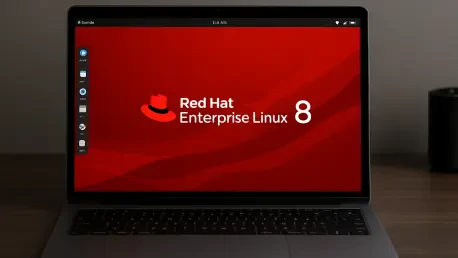Introduction
In today’s enterprise environments, where virtualization and hybrid cloud architectures dominate, the ability to seamlessly connect multiple network segments poses a critical challenge for IT administrators tasked with ensuring robust connectivity and performance across systems. Network bridges serve as a foundational solution, enabling layer 2 connectivity between physical and virtual interfaces, thus facilitating efficient traffic forwarding based on MAC address tables. This capability is particularly vital for organizations running Red Hat Enterprise Linux 8 (RHEL 8), a platform widely adopted for its stability and support for complex networking configurations. Without properly configured bridges, businesses risk network silos that hinder scalability and operational agility.
This article delves into the strategic importance of network bridges within RHEL 8, offering a detailed exploration of configuration methods tailored to diverse enterprise needs. It addresses the practical steps and tools available for setting up bridges, ensuring that IT teams can bridge physical and virtual environments effectively. By focusing on outcomes such as enhanced network integration and reduced downtime, the discussion aims to empower B2B professionals with actionable insights. Understanding these configurations is not just a technical necessity but a business imperative for maintaining a competitive edge in environments where connectivity directly impacts service delivery and customer satisfaction.
The significance of mastering network bridge configuration extends beyond technical proficiency; it aligns with broader goals of operational resilience and cost efficiency. As enterprises continue to scale their digital infrastructure, the insights provided here will prove invaluable for decision-makers seeking to optimize their network architecture.
Mastering Bridge Configuration Techniques
Network bridges in RHEL 8 act as a linchpin for connecting disparate network segments, whether linking virtual machines to a host network or integrating multiple physical interfaces. A bridge operates as a controller, with attached devices functioning as ports, supporting a range of interfaces including Ethernet devices, bonds, teams, and VLANs. However, limitations exist—due to IEEE 802.11 standards, Wi-Fi networks in Ad-Hoc or Infrastructure modes cannot be bridged, a constraint that businesses must navigate when planning network topologies. This understanding is crucial for IT teams aiming to design architectures that avoid connectivity bottlenecks.
Several tools and methods are available for configuring bridges in RHEL 8, each catering to different operational contexts and skill sets. The nmcli utility offers a command-line approach, ideal for scripting and automation in large-scale environments, allowing administrators to create a bridge, assign ports, and configure IP settings with precision. Alternatively, the RHEL web console provides a browser-based interface for those preferring graphical tools, simplifying tasks like enabling Spanning Tree Protocol (STP) to prevent loops. For environments without graphical interfaces, nmtui delivers a text-based user interface, while nm-connection-editor suits desktop environments. Additionally, the declarative Nmstate API ensures configuration consistency through YAML files, and Ansible-driven RHEL system roles enable remote automation—a boon for distributed teams managing multiple servers.
The business impact of choosing the right configuration method cannot be overstated. For instance, a multinational corporation managing virtualized workloads across data centers could leverage Ansible to standardize bridge setups, reducing human error and deployment time by up to 40%, as suggested by automation efficiency studies. These methods directly influence network uptime and scalability, key metrics for stakeholders evaluating IT investments. By aligning the chosen tool with organizational needs—whether prioritizing speed, accuracy, or ease of use—enterprises can achieve seamless integration of network resources, ultimately driving operational success.
Conclusion
Reflecting on the various approaches to setting up network bridges in RHEL 8, it becomes evident that the choice of tool and method significantly shapes outcomes like network reliability and administrative efficiency. Each technique, from command-line precision to automated playbooks, addresses specific enterprise challenges with tailored solutions.
Looking ahead, IT leaders should assess their current network architectures against these configuration strategies to identify gaps and opportunities for optimization. Exploring hybrid approaches or investing in training for tools like Ansible could further enhance scalability. The broader implication is clear: proactive bridge management remains a cornerstone of resilient digital infrastructure.









